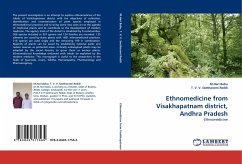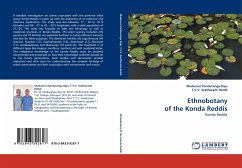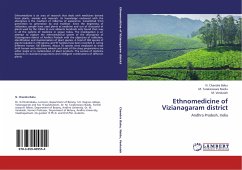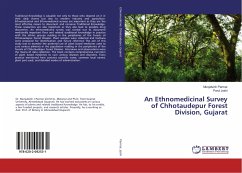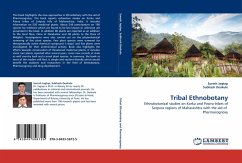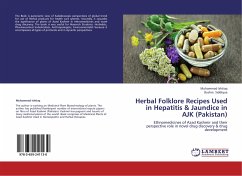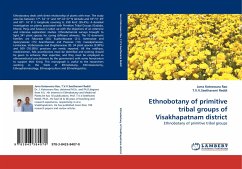
Ethnobotany of primitive tribal groups of Visakhapatnam district
Ethnobotany of primitive tribal groups
Versandkostenfrei!
Versandfertig in 6-10 Tagen
52,99 €
inkl. MwSt.

PAYBACK Punkte
26 °P sammeln!
Ethnobotany deals with direct relationship of plants with man. The study area lies between 17º- 34' 11" and 18º-32' 57" N latitude and 18º-51' 49" and 83º- 16' 9" E longitude covering 6, 298 Km2 (56.4%). A detailed investigation on plants associated with Primitive Tribal Groups (Gadaba, Khond, Porja and Savara) is taken up with the objectives of an extensive and intensive exploration studies. Ethnobotanical surveys brought to light 341 plant species for curing different ailments. The 10 dominant families are Fabaceae (26), Euphorbiaceae (21), Asteraceae and Apocynaceae (15) Acanthaceae and...
Ethnobotany deals with direct relationship of plants with man. The study area lies between 17º- 34' 11" and 18º-32' 57" N latitude and 18º-51' 49" and 83º- 16' 9" E longitude covering 6, 298 Km2 (56.4%). A detailed investigation on plants associated with Primitive Tribal Groups (Gadaba, Khond, Porja and Savara) is taken up with the objectives of an extensive and intensive exploration studies. Ethnobotanical surveys brought to light 341 plant species for curing different ailments. The 10 dominant families are Fabaceae (26), Euphorbiaceae (21), Asteraceae and Apocynaceae (15) Acanthaceae and Poaceae (10), Caesalpiniaceae, Lamiaceae, Verbenaceae and Zingiberaceae (9). 34 plant species (9.90%) and 569 (78.38%) practices are newly reported. All the vaidhyas, medicinemen, folk practitioners must be identified and training should be given to enhance their expertise, and they must be employed as ethnomedicinal practitioners by the government with some honorarium to support their living. This monograph is useful to the researchers working in the fields of Ethnobotany, Ethnotaxonomy, Ethnopharmacology, Ethnoagriculture and Ethnolinguistics.




